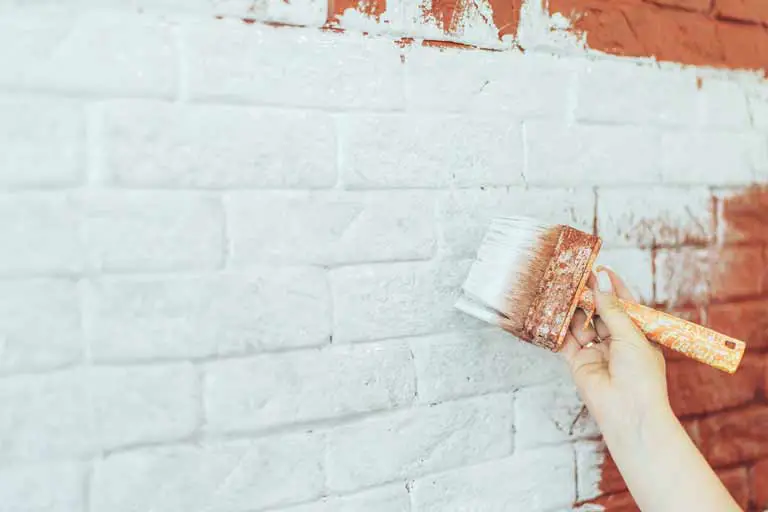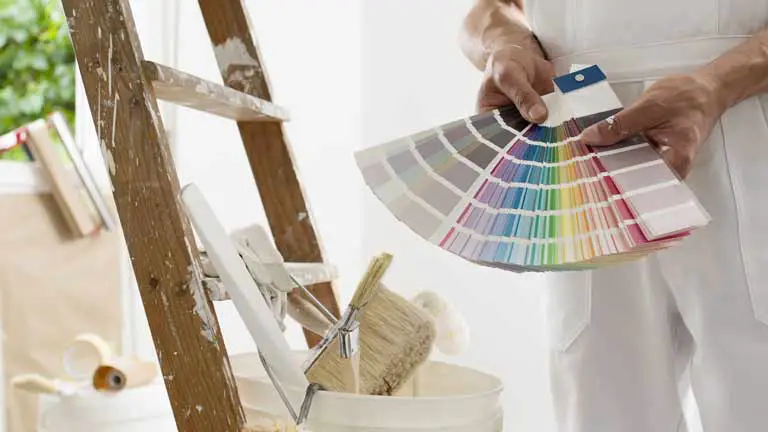
Limewash is a versatile paint that you can use on various surfaces to create a unique and beautiful finish. If you’re considering using limewash in your home, knowing which surfaces are suitable for this type of paint is important.
One of the great things about limewash is that it can be used on interior and exterior surfaces. This includes walls, ceilings, and even furniture. Limewash is particularly well-suited to porous surfaces such as lime plaster, brick, stone, and stucco, as it allows the surface to breathe and prevents moisture from becoming trapped.
However, it’s important to note that limewash may not be suitable for all surfaces. Non-porous surfaces such as metal and glass will not be able to absorb the paint, which can result in a dusty finish. Additionally, surfaces that are already painted or sealed may require special preparation before applying limewash.
By understanding which surfaces are suitable for limewash, you can ensure that your project succeeds. Let’s look at some of the surfaces suitable for limewashing.
What is Limewash?
Limewash could be the answer if you’re looking for a natural and eco-friendly way to give your walls and ceilings a new look. Limewash is a type of paint that has been used for centuries and is made from natural materials. It is a mixture of lime, water, and natural pigments.
One of the benefits of using limewash is that it is entirely natural. Unlike modern paints, which are often made with synthetic materials, limewash is made from all-natural ingredients. This makes it an eco-friendly option for those looking to reduce their carbon footprint.
Another benefit of limewash is that it is breathable. Because it is made from lime, it allows the walls to breathe just like other lime-building materials. This helps to prevent moisture buildup, reducing condensation and mould growth. This is especially important in older homes that may not have modern ventilation systems.
Overall, limewash is a versatile and eco-friendly option for those looking to give their walls a new look. It is made from natural materials, allows walls to breathe, and is suitable for use on porous surfaces such as plaster, porous stone, or brick.
Related article: Limewash Pros and Cons: A Comprehensive Guide

Surfaces Suitable for Limewash
When it comes to limewashing, there are a variety of surfaces that can be coated with this mineral-based paint. Here are the different types of surfaces that are suitable for limewash:
Porous Surfaces
Limewash is perfect for porous surfaces such as brick, porous stone, and lime plaster or render. These surfaces absorb the limewash and create a strong bond. Limewash can be applied directly to these surfaces without needing a primer.
Almost all natural surfaces fall into this category. To test if a surface is porous and, therefore, suitable for limewashing, perform a water absorption test.
This involves pouring a small amount of water onto the surface and observing how quickly it is absorbed. Porous surfaces absorb the water quickly, while non-porous surfaces repel it.
Non-porous Surfaces
If you have performed a porosity test and find that the surface you intend to limewash is not porous, you still have options. Limewash is a very versatile paint. There are many additives you can use to help limewash adhere to surfaces it normally wouldn’t.
Casein is an excellent option. It acts as a natural glue, and when added to limewash, it helps it stick onto non-porous surfaces like metal, wood, drywall, concrete and gypsum plaster.
Non-porous masonry, like some engineered stones and natural stones like blue lias, can be limewashed using casein-bound limewash. Alternatively, they can be primed with a mixture of limewash and very fine sand at a ratio of 1 limewash to 1 fine sand. After this priming coat has fully cured, normal limewashing should be possible.
In conclusion, limewash can be used on various surfaces, including porous surfaces such as brick and stone, masonry, wood and metal, and drywall and plaster. When applying limewash, following the manufacturer’s instructions and using a primer when necessary to ensure proper adhesion is important.
How to Test if a Surface is Suitable For Limewashing
Before applying limewash to any surface, it’s important to ensure that the surface is suitable for limewashing. Here are some steps you can take to test if a surface is suitable for limewashing:
Firstly, do a small test patch. Before applying limewash to the entire surface, doing a small test patch in an inconspicuous area is best. This will allow you to test whether the limewash will adhere well to the surface and if it will have the desired effect.
Make sure you apply the limewash properly and allow it to cure very slowly over the course of 24 hours. It must remain moist but not wet so that it can carbonate. Failure to properly care for the limewash as it cures will result in a dusty and likely cracked surface.
Checks to Perform Once Your Test Patch Has Cured:
- Check for dusting: Limewash should not be dusty after curing (roughly 24 hours). Rub your hand over the surface after the limewash has cured to test for dusting. The surface is unsuitable for limewashing if you see lots of dust or powder on your hand.
- Check for adhesion: Limewash should adhere well to the surface and should not rub off easily. Rub a cloth over the surface once the limewash has cured to test for adhesion. If the limewash rubs off easily, the surface is not suitable for limewashing. (this is also a great test to see whether limewash would rub off on your clothing when applied to the surface in question)
- Check for a reaction: Limewash should not have any reaction with the surface. Apply your test patch and wait for a few hours. The surface is unsuitable for limewashing if you notice any bubbling or other reactions.
- Check the colour: Limewash will change the colour of the surface it’s applied to. To ensure that the colour matches your expectations, apply a test patch to the surface and wait for it to cure. If the colour is not what you expected, you may need to choose a different colour.
- Check for splashing: If the surface is in an area that may get splashed, such as a bathroom or kitchen, it’s important to ensure that the limewash can withstand splashing. Once the limewash has cured, splash water over the limewash. If the water has not washed away the limewash, it should be suitable for use in a splash-prone area.
- Check for smoothness: Limewash should have a smooth surface without bubbles or gritty areas. Apply your test patch to the surface and wait for it to cure. If the surface is smooth, the surface is suitable for limewashing.
Following these steps ensures that the surface you plan to limewash is suitable for the job. Doing a small test patch is always recommended to avoid any unwanted surprises.
Related article: Does Limewash Rub Off on Clothes?
Conclusion
In conclusion, limewash is a versatile paint that can be used on various surfaces. Its unique properties make it a popular choice for homeowners and professionals alike. Here are some key takeaways:
- Limewash suits porous surfaces such as brick, stone, and lime plaster.
- It can also be used on modern plasters, drywall, and wood, although these surfaces may require additional preparation.
- Limewash is ideal for creating a soft, matte finish with subtle variations in colour and tone.
- It is a breathable paint that allows moisture to escape, making it particularly suitable for humid environments.
- Limewash is a natural, eco-friendly option that is free from harmful chemicals.
When using limewash, following the manufacturer’s instructions carefully and carrying out a test patch before applying it to a large area is important. This will help you to determine whether the paint is suitable for your chosen surface and to achieve the desired finish.
Overall, limewash is a great choice for anyone looking to add character and texture to their walls and surfaces. Whether renovating an old building or simply looking to update your home, limewash is a versatile and stylish option that is well worth considering.

